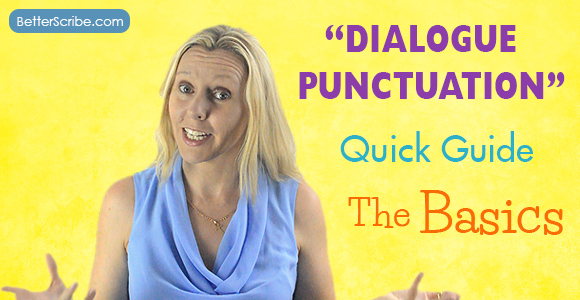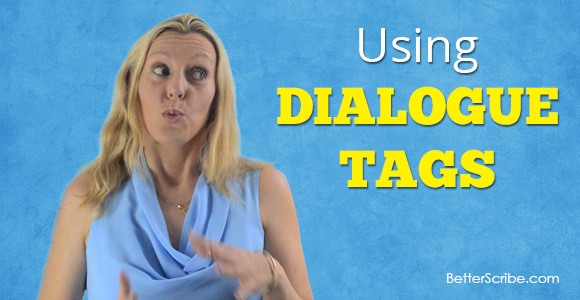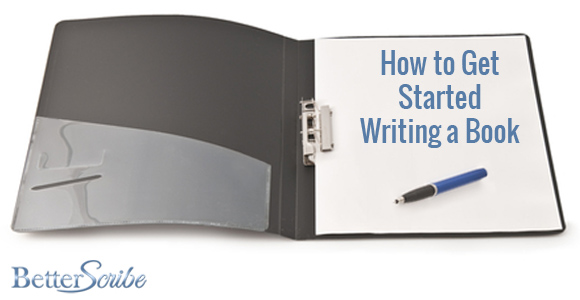
One of the major areas I find punctuation problems is in dialogue. This is because some of the dialogue punctuation rules are confusing, ignored or subjective. So let’s aim to cut down some of that confusion by focusing on issues that crop up repeatedly.
Which way around?
Let’s start with the dialogue tag itself. Now you may have seen something along the lines of ‘said Jenny’ or ‘Jenny said’ and are utterly confused about which way you should be wording it. Technically both are correct; however, it’s best to choose one or the other for styling purposes throughout your entire manuscript. There is nothing worse than coming across a page of dialogue that has:
‘I can’t see it,’ said Jenny.
‘I can see it,’ Tom said.
‘Now, I see it,’ Jenny said.
‘There it is,’ said Tom.
Looks like a mistake, doesn’t it? So my suggestion is to choose one and stick to that style throughout your manuscript. If you need more help to decide, think about changing the name to ‘he’ or ‘she’ and see which way you prefer.
Example:
‘I can’t see it,’ said she.
‘I can see it,’ he said.
‘Now, I see it,’ she said.
‘There it is,’ said he.
I don’t know if it’s just me but ‘said he’ and ‘said she’ seem odd and old-fashioned. This is why I prefer to put the pronoun (whatever it may be) first in my dialogue tags and I continue with the same style throughout the manuscript.
Dialogue Punctuation
Now on to the actual punctuation of dialogue, let’s stick to the simple rules.
Quotation marks
If it’s dialogue it must be marked as dialogue with quotation marks. In Australia and UK English single quotation marks are used, but in America double quotation marks are preferred.
Example:
‘Australia and UK use single quotation marks,’ Holly said.
“America use double quotation marks,” Tina said.
Once you have decided which quotation mark to use we move onto the next rule.
Capitals in dialogue
The first word of dialogue is always capitalised. This can get tricky but for now let’s just stick to the basics.
Example:
‘We don’t allow pets in the cafe,’ Holly said.
Or
Tina said, ‘We don’t allow pets?’
As you can see in example above as soon as a character speaks it is treated as though it is a new sentence and always has a capital.
To comma or full stop
For dialogue with no dialogue tag:
The dialogue is treated as a complete sentence and must have terminal punctuation at the end. You could use a question mark, exclamation mark, full stop, ellipsis or em dash to get the desired effect.
Examples:
‘Why did you call?’
‘I was checking to make sure you were okay.’
‘I don’t need you checking up on me!’
‘Cranky much? I would have thought—’
‘That’s what I …’
Ok, maybe not the best writing in the world (it breaks the rule about knowing who is speaking) but I was more interested in showing how each should be used without a dialogue tag.
For dialogue with action tags:
The dialogue and the action tag are treated as two different sentences, which means the dialogue itself must have terminal punctuation at the end. You could use a question mark, exclamation mark, full stop, ellipsis or em dash to get the effect you want.
Examples:
‘Why did you call?’ Tina ran her finger through the dust on the table.
‘I was checking to make sure you were okay.’ Holly checked the temperature on the oven as she held the phone to her ear.
‘I don’t need you checking up on me!’ Tina jumped up from her seat and paced the length of the room.
‘Cranky much? I would have thought—’ The dog raced inside and placed big, dirty paws on Holly’s white apron.
‘That’s what I …’ Tina looked through her mail and found the letter she had been waiting for.
Once again, not the best writing (breaks the rule of moderation as they are all action tags) but at least this time we know who is speaking.
For he said/she said (normal) dialogue tags:
The he said/she said dialogue tags are slightly different in their punctuation needs. This is because the sentence doesn’t end with the dialogue but continues and finishes after the dialogue tag.
For example:
‘I can’t believe you left right in the middle of dinner,’ Tina said.
So at the end of the dialogue we put a comma and at the end of the dialogue tag we put the full stop to complete the sentence.
Now if I was to change this example to a question and replace Tina with the pronoun ‘she’ it would be written as:
‘Why did you leave in the middle of dinner?’ she said.
And before you ask, the lowercase ‘s’ for ‘she’ is correct because the dialogue tag is continuing on the sentence even though the dialogue itself ended with terminal punctuation.
What happens to punctuation when we decide to put the dialogue tag at the beginning of a sentence?
Tina said, ‘I find this confusing.’
Mary replied, ‘It’s easy once you know a few simple rules.’
Once again the dialogue tag is part of a complete sentence and this time it continues with the dialogue itself. A comma is placed after the dialogue tag to signify the pause before the dialogue starts and a capital starts the dialogue itself as this is the first spoken word in the character’s sentence.
Dialogue tags in the middle of dialogue
Things get more complicated when we decide to move the dialogue tag into the middle of the dialogue itself. This is a handy tactic for breaking up long sections of dialogue, but we need to be extra diligent when editing to make sure it is correct.
‘That’s a first edition Mint plate,’ said Tina, ‘so don’t break it.’
In the above example we don’t have a full stop after the dialogue tag because the dialogue sentence continues after the tag. However, in the example below the dialogue in the first part is a complete sentence that finishes after the dialogue tag, which is why we have a full stop, however the character hasn’t yet finished speaking so the next bit of dialogue is treated as a new sentence.
‘This punctuation thing is easy,’ said Tommy. ‘I can do this.’
Related guide: How to Use Dialogue Tags.






Connect With Kelly